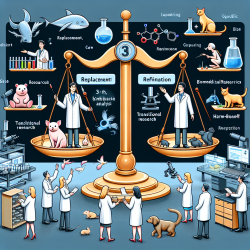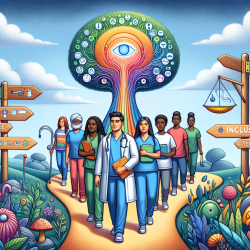Introduction
In the realm of biomedical research, ethical considerations are paramount, especially when it involves animal models. The concept of the 3Rs—Replacement, Reduction, and Refinement—serves as a guiding framework to minimize harm to animals while maximizing scientific outcomes. This blog delves into the multifactorial role of the 3Rs in shifting the harm-benefit analysis in animal models of disease, as presented in the research article "The multifactorial role of the 3Rs in shifting the harm-benefit analysis in animal models of disease" by Graham and Prescott.
The 3Rs Framework
The 3Rs concept, first introduced by Russell and Burch in 1959, has become a cornerstone of ethical animal research. It aims to:
- Replace animal experiments with alternative methods wherever possible.
- Reduce the number of animals used in research to the minimum necessary.
- Refine procedures to minimize suffering and improve animal welfare.
These principles not only address societal concerns about animal research but also enhance the scientific validity and translational value of research findings.
Impact on Harm-Benefit Analysis
Applying the 3Rs effectively shifts the ethical harm-benefit assessment in animal research. By reducing the reliance on animal models and refining experimental protocols, researchers can achieve a more favorable balance between the harms inflicted on animals and the benefits gained for human and animal health. This is particularly crucial in translational research, where the goal is to develop treatments for direct application in clinical settings.
Scientific and Ethical Benefits
The implementation of the 3Rs has led to significant advancements in research methodologies. For instance, the development of alternative models, such as 3D tissue constructs and in silico simulations, has reduced the need for animal testing while providing more accurate predictions of human responses. Moreover, refined techniques have improved the welfare of animals used in research, leading to more reliable and reproducible scientific outcomes.
Encouraging Further Research
While the 3Rs have already made a substantial impact, there is still room for further research and innovation. Practitioners are encouraged to explore new methodologies that align with the 3Rs framework. Engaging with the latest developments in the field can lead to more ethical and scientifically robust research practices.
Conclusion
The integration of the 3Rs into animal research is not just an ethical imperative but also a scientific one. By minimizing harm and enhancing the quality of research, the 3Rs contribute to better translational outcomes and improved animal welfare. As researchers continue to innovate and refine their approaches, the potential for meaningful advancements in biomedical research grows.
To read the original research paper, please follow this link: The multifactorial role of the 3Rs in shifting the harm-benefit analysis in animal models of disease.










